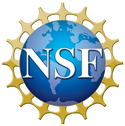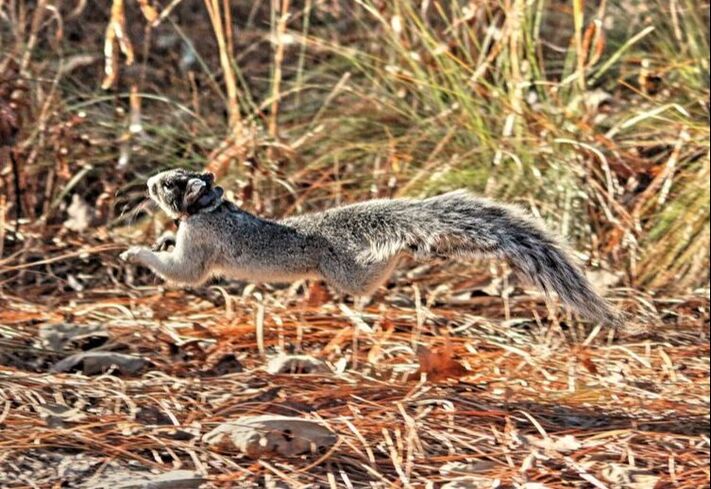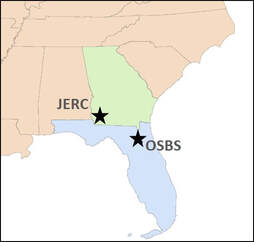
This material is based upon work supported by funding by a
National Science Foundation (NSF) EAGER grant and the NSF Graduate Research Fellowship Program under Grant No. (DGE-1256259) to Ph.D. student Catherine Frock. |
Principal Investigators: Dr. Bob McCleery and Dr. Mike Conner.
Objectives
- Graduate students: Cat Frock (Ph.D. student), Alex Potash (M.S. 2018)
- Collaborator: Dr. Eben Broadbent (SPEC Lab - University of Florida)
- Research technicians: Lisa Pipino, Diane Episcopio, Kristen Beattie, Zach Bell, Levi Brown, Jaime Neill, Shelby Shiver
- Volunteers: Savannah Ryburn
- Use novel tracking devices to determine locations of a small vertebrate species (< 2 kg), derive standard movement statistics, and calculate spatial utilization distributions using fine-scale spatiotemporal technology.
- Use error modeling and sub-sampling to simulate a VHF radio-telemetry study and compare results between high-resolution techniques to that obtained using traditional VHF approaches.
- Integrate animal location and movement data with NEON AOP data to evaluate microhabitat selection (fine scale) throughout animal home ranges (broad scale).
- Integrate animal habitat selection with NEON Flux Tower Measurements (FTM) data to quantify influence of weather patterns on immediate and seasonal animal movements and environmental interactions.
- Model fine-scale animal movement patterns relative to their immediate surroundings using discrete-choice models.
- Determine if NEON FTM data can capture environmental changes that occur between AOP data capture events.
- Determine if the frequency of remotely sensed data acquisition affects models on animal movements and environmental interaction.
- Graduate students: Cat Frock (Ph.D. student), Alex Potash (M.S. 2018)
- Collaborator: Dr. Eben Broadbent (SPEC Lab - University of Florida)
- Research technicians: Lisa Pipino, Diane Episcopio, Kristen Beattie, Zach Bell, Levi Brown, Jaime Neill, Shelby Shiver
- Volunteers: Savannah Ryburn
|
Study Sites
- Ordway-Swisher Biological Station (OSBS): ordway-swisher.ufl.edu - Joseph W. Jones Ecological Research Center (JERC): www.jonesctr.org |
When fully implemented, there will be 60 terrestrial National Ecological Observatory Network, Inc. (NEON) sites. These sites provide a wealth of ecological data and hold enormous potential for studying the movement of animals and their interactions with the environment, yet we know of no animal movement studies that are fully integrated with NEON data products. Only within the past few years has wildlife tracking technology become miniaturized to the point that even small vertebrates can be successfully tracked with great location accuracy. Integration of animal movements with data available via the NEON platform has the potential to transform how scientists study the ecology, behavior, and interactions of animals.
Using airborne remotely-sensed data and data related to atmospheric processes available via the NEON platform, novel animal tracking devices, a model study species, and additional remote sensing technology, we aim to integrate animal movements at fine spatiotemporal scales with fine-scaled environmental data across broad spatial scales to provide: (1) proof of concept, (2) assessment of temporal adequacy of the current NEON Airborne Observation Platform (AOP) data collection schedule relative to animal-movement data, and (3) suggestions for implementation of high resolution animal tracking studies across NEON domains.
All photos and videos were taken by project personnel unless otherwise noted.
Using airborne remotely-sensed data and data related to atmospheric processes available via the NEON platform, novel animal tracking devices, a model study species, and additional remote sensing technology, we aim to integrate animal movements at fine spatiotemporal scales with fine-scaled environmental data across broad spatial scales to provide: (1) proof of concept, (2) assessment of temporal adequacy of the current NEON Airborne Observation Platform (AOP) data collection schedule relative to animal-movement data, and (3) suggestions for implementation of high resolution animal tracking studies across NEON domains.
All photos and videos were taken by project personnel unless otherwise noted.



